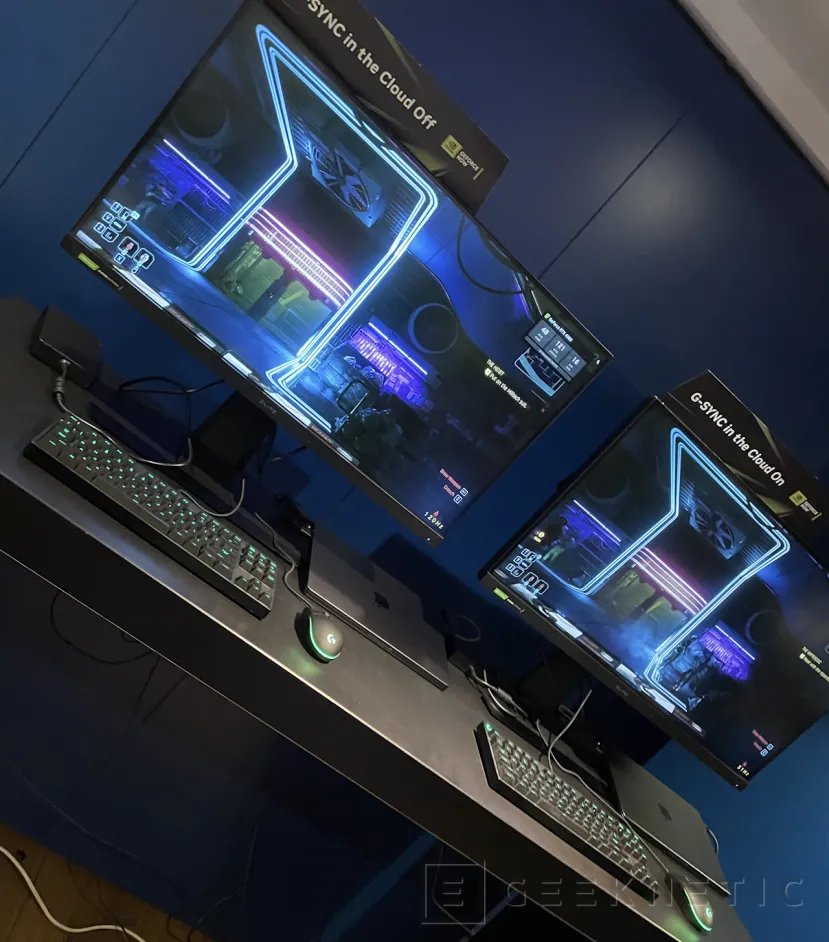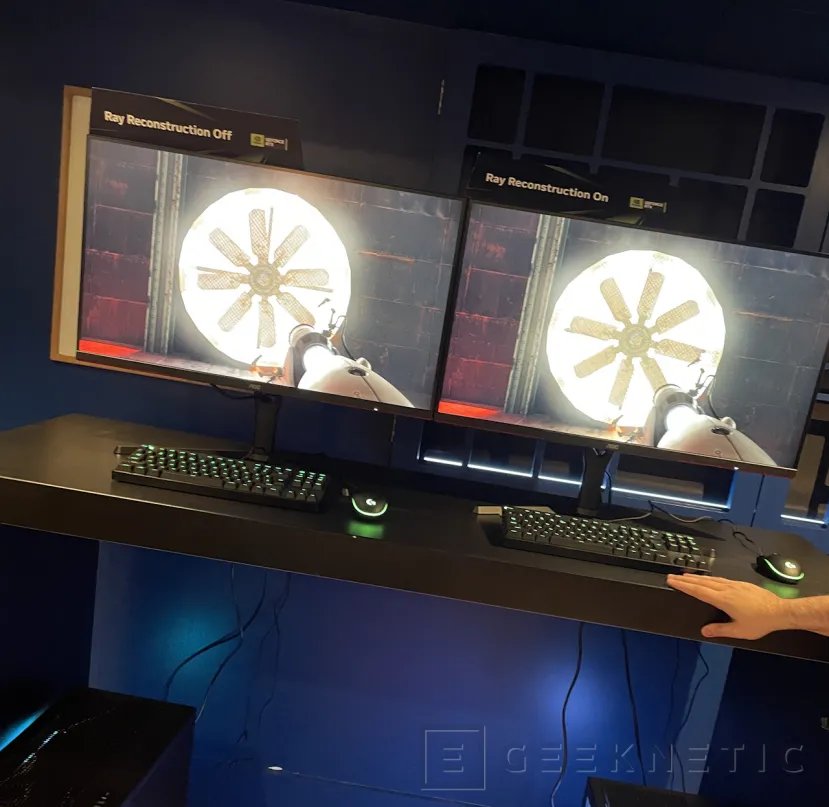NVIDIA ACE. AI applied to developing games with more complex subplots.
NVIDIA ACE is a technology that encompasses some techniques developed by NVIDIA to use cloud-based AI to facilitate some elements that offer greater realism in games, now applied to elements that seek to be more complex and realistic, such as non-player characters that, in addition to guiding us in the primary and secondary plots of the games are not so linear and predictable, they have their own personality and can also offer greater realism in the rendering of conversations and gestures.
This technology includes three AI models, based on these options:
- NVIDIA NeMo, It is an LLM (Long Range Language Model) language model. This technology is what allows NPCs in a game to offer more depth in interaction with the user, less linear conversations and more complex personalities. It is accompanied by two other technologies so that not only is the conversation more elaborate, sometimes disturbing, but it is also realistic when presented to the player.
- NVIDIA Riva, (reminiscent of the name of the first graphics chipset that the brand developed so many years ago that I will not admit to having lived) provides that element of text-to-audio and audio-to-text conversion, in multilanguage, between NVIDIA NeMO and the rendering in the game. It is important because it allows us to interact in the game with text or voice in almost any language.
- NVIDIA Omniverse Audio2Facecreates these facial animations, currently with connectors for Unreal Engine 5, that allow a quick and realistic conversion between what the character expresses and their facial gestures.
We were able to experience this technology with the help of the developer inMotion, who has developed with Nvidia the Covert Protocol demo that allows us to precisely test this technology with NPCs with more elaborate personalities and much less linear conversations that are even capable of interacting with banal conversations. which in turn continue to push the player in their main objectives.
G-Sync in the Cloud and G-Sync Pulsar
Two of the demos that impressed me the most during the presentation are related to G-Sync. The first focused on the possibility of using this technique also in streaming games through GeForce NOWcurrently limited to subscribers of the “Ultimate” version of this service that currently has RTX 4080 engines that develop all this potential.
Combined with a VRR monitor, relying on GeForce Now’s RTX 4080 SuperPODs technology, NVIDIA has achieved the magic of adapting the real FPS that is being sent to the target client with the real refresh rate of the monitor, or rather, using VRR technology of the monitor so that there is synchronization between the FPS that GeForce NOW is capable of providing in streaming and the vertical refresh rate of the monitor. In conjunction with NVIDIA Reflex, also available on GeForce NOW for some time, the response speed and image quality becomes truly surprising with real latencies of less than 25ms when playing on servers in Europe.

The result is a surprising image quality that, together with other technologies such as DLSS, allows us to dream of a future where we do not have to buy high-end graphics but rather enjoy high-quality graphics whenever and however we want with practically the same experience of having the graphics on our own computer.
With important additions, such as the entire XBOX and Activision catalog, after the agreements reached with Microsoft, this service receives an important boost with compatibility for the main players in the sector. Diablo IV is one of the latest additions, with support for DLSS 3 and soon Ray Tracing.
Another of the demos that we could see in the presentation, also related to G-Sync, is G-Sync Pulsar technology. That allows you to combine the best of VRR, and light strobbing, to combine them at an intermediate point where the image quality is maintained, which translates into eliminating “Flickering” in image transitions as well as Blur and the double image that is created. introduces the rapid transition between pixels. This technology requires monitors prepared for it, not just any VRR monitor on the market will do.

On the other hand, we were also able to test the fastest vertical frequency monitor on the market, which has recently arrived on the market, with a vertical refresh rate of up to 540Hz with a 1080p resolution LCD panel. He ASUS ROG Swift Pro PG248QP 24.1″ It is the fastest G-Sync monitor on the market, with latencies of less than 0.2ms. This monitor, however, does not support G-Sync Pulsar, this technology will reach even more modern monitors, surely after the summer.

DLSS 3 and Ray-Reconstruction
Another of the demos that left me most impressed is how DLSS 3.5 works in next-generation AAA gamesat the expense of a few more milliseconds of latency we can have better image quality with Ray Tracing and a gain of up to 7 times the original FPS at native resolution.

In Horizon Zero Down we could see a gain of 20 to 116 FPS just by activating DLSS 3 with a latency loss of 10ms, gone from about 30ms to 42ms with DLSS activated. This game does not currently support NVIDIA Reflex, which would correct this situation by achieving the best of both worlds, more FPS and lower latency.
We were also able to see how NVIDIA turns classic games like Portal into true wonders supported by RTX, with DLSS 3.5, with ray reconstruction. Learning on NVIDIA supercomputers makes this game a perfect example of how these technologies add extra realism to complex lighting management. More details in the gratings, elimination of lighting transitions in objects, all applied to a mythical game that I never imagined having this image quality.

ChatRTX
NVIDIA ChatRTX It allows us to apply some of the main LLMs that can be installed on a PC combined with the incredible AI processing power of its Tensor Core units to have our own local AI without sharing data with third parties. Currently we can process both text files (Word) and Excel, as well as images and PDFs.
The ChatBot does a preliminary analysis of the folders that we can offer and then the process is loaded onto the tensioner units of the graphics card with spectacular performance. Currently some of NVIDIA’s graphics chips offer up to 20 times more performance than the NPU units built into the latest processors from AMD and Intel.

We can interact both by text and by voice and it also integrates image processing models. We have even tested it with shared folders on the network, although in this case I recommend having a sufficiently fast network, in accordance with the amount of data shared.
NVIDIA does not feed any cloud language with our data, so it is a very safe way to create our own AI based on our own data and always processed locally.
Just a few days ago NVIDIA announced the incorporation of new languages to ChatRTX, all executed locally, to improve information processing options based on the needs that users have.
Talking to the experts
During the session we were able to share opinions with different NVIDIA experts. We talk about these technologies, how the improvement of game streaming can change the video game industry on the PC and how the world of the PC, especially that of mobility, can change in the future with the incorporation of other actors such as processors based on ARM architecture that now seem to receive a significant boost in terms of performance.
NVIDIA executives did not give us details about new hardware being developed, but they could assure us that the company will always be there where gamers want them to be. With this we can understand that the company will be prepared for new challenges perhaps in the form of possible new high-performance SOCs, they already have experience in the field of custom ARM chips, such as those that give life to the Nintendo Switch.
The company also knows of its potential in cloud process environments, and in AI technology, where it is one of the largest suppliers of specialized hardware, but it also continues to trust in a hybrid model where many players will want to continue having local hardware. , with which the experience will be superior, also combined with the best of the cloud process not so much in the execution of the game but providing added value in other elements that still need to be improved.
In this sense, technologies such as NVIDIA ACE could provide new, more extensive and deeper experiences in titles that are yet to come. The learning of DLSS-type algorithms is also another of the pillars of the brand’s development, providing higher FPS rates, which is basic for current players, while better image quality techniques are being applied that allow more realistic games. .
NVIDIA is currently a benchmark in all these fields and in view of this experience that we had in person, we can affirm that the company is not exactly resting on its laurels but rather innovating, creating new technologies that successfully face up to now impossible challenges, such as example G-Sync Pulsar that took several years to develop in a technical challenge that they have once again managed to overcome. This seems to be the philosophy of a brand that has until now been a reference in technology for players, whom it always has in mind.
End of Article. Tell us something in the Comments!

